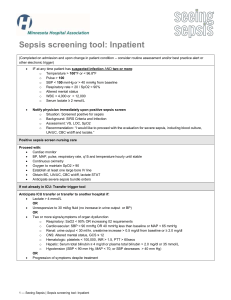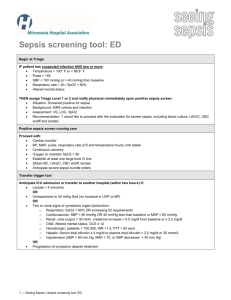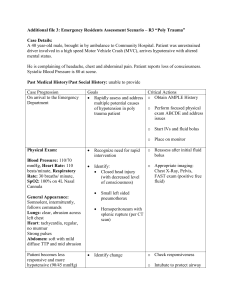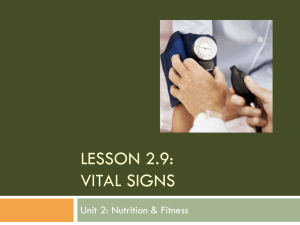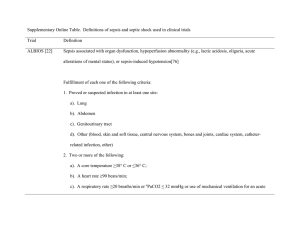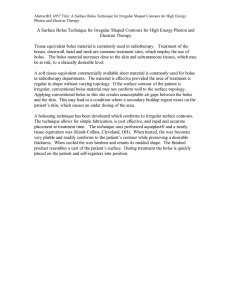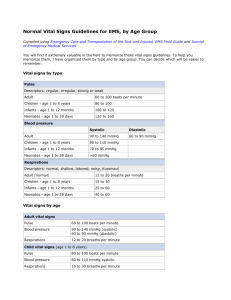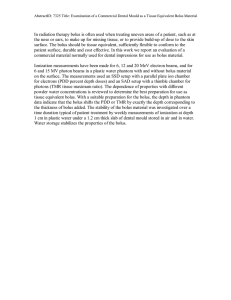file - BioMed Central
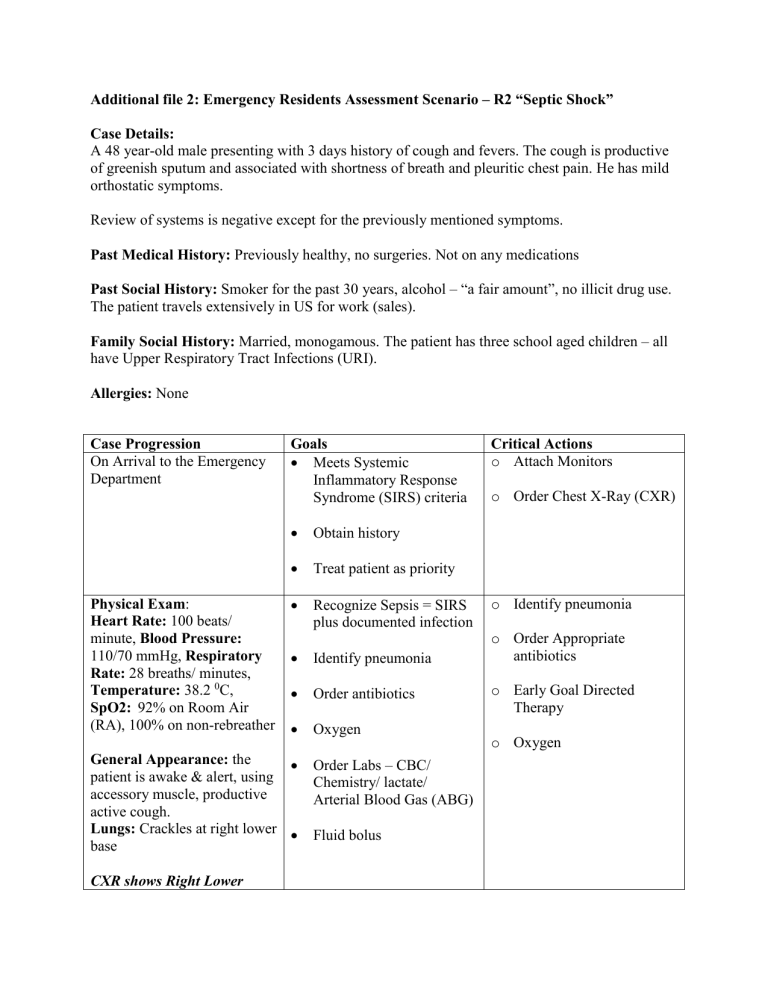
Additional file 2: Emergency Residents Assessment Scenario – R2 “Septic Shock”
Case Details:
A 48 year-old male presenting with 3 days history of cough and fevers. The cough is productive of greenish sputum and associated with shortness of breath and pleuritic chest pain. He has mild orthostatic symptoms.
Review of systems is negative except for the previously mentioned symptoms.
Past Medical History: Previously healthy, no surgeries. Not on any medications
Past Social History: Smoker for the past 30 years, alcohol – “a fair amount”, no illicit drug use.
The patient travels extensively in US for work (sales).
Family Social History: Married, monogamous. The patient has three school aged children – all have Upper Respiratory Tract Infections (URI).
Allergies: None
Case Progression
On Arrival to the Emergency
Department
Physical Exam :
Heart Rate: 100 beats/ minute, Blood Pressure:
110/70 mmHg, Respiratory
Rate: 28 breaths/ minutes,
Temperature: 38.2
0
C,
SpO2: 92% on Room Air
(RA), 100% on non-rebreather
General Appearance: the patient is awake & alert, using accessory muscle, productive active cough.
Lungs: Crackles at right lower base
CXR shows Right Lower
Goals
Meets Systemic
Inflammatory Response
Syndrome (SIRS) criteria
Obtain history
Treat patient as priority
Recognize Sepsis = SIRS plus documented infection
Identify pneumonia
Order antibiotics
Oxygen
Order Labs – CBC/
Chemistry/ lactate/
Arterial Blood Gas (ABG)
Fluid bolus
Critical Actions o Attach Monitors o Order Chest X-Ray (CXR) o Identify pneumonia o Order Appropriate antibiotics o Early Goal Directed
Therapy o Oxygen
Lobe Pneumonia
Twenty minutes later:
Patient confused
Heart Rate: 120 beats/ minutes, Blood Pressure:
90/38 mmHg, Respiratory
Rate: 30 breaths/ minutes,
SaO
2
89% on RA, 97% on
NRB
Labs: Na 140, K 4.5, Cl
103, HCO3 17, BUN 19, creatinine 1.7, Glucose 121,
Lactate 5
WBC 20,000
Hct 37
Forty minutes later:
Patient very confused, not compliant
After 2 Liter (L) bolus:
Heart Rate: 126 beats/ minutes, Blood Pressure:
90/32 mmHg, Respiratory
Rate: 40 breaths/ minutes
SpO2: 92% on NRB, 81% on
RA
Further 2L (4L total)
Heart Rate: 130 beats/ minutes and Blood Pressure:
85/25 mmHg
Inotropic support started
Lactate 6.7
Recognize SEVERE sepsis
= sepsis plus at least one sign of organ hypoperfusion (altered mental status and high lactate)
Track urine output
Reassess vital signs o Identify metabolic acidosis o Respiratory support either by intubation or BiPAP o Initiate resuscitation with crystalloid o Notify MICU
Need to recognize indication for intubation
-
-
Crystalloid fluid bolus 40-
60ml/kg (i.e. 3-5L)
Foley catheter
Ventilate at 6-7ml/kg
~ 400ml tidal volume,
PEEP 5
Consider Inotropic support
Dopamine 5 micrograms/kg/min
Epinephrine
/Norepinephrine 0.25 micrograms/kg/min
Transfusion to keep
Hct>30%
Failure to respond to fluid bolus = septic shock
Goal CVP 8-12 mm Hg
Goal MAP 65-90 o Intubate using appropriate technique o More fluid to reach 50 ml/kg bolus o Place Central Venous
Catheter for vasopressors and Scv0
2
Monitoring o Inotropic support o Post intubation management
MICU busy- “will be down soon”
Hemodynamic monitoring
Goal ScvO2 >70%
End Scenario
